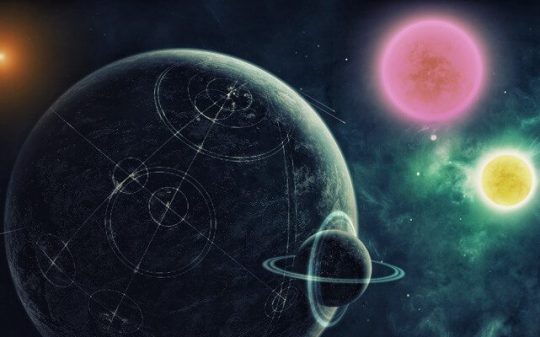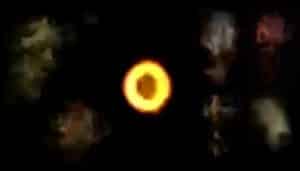I cannot deny that there’s quite a view when looking up towards the sky, especially at night. But what would it be like if instead of staring at one sun, we’d stare at three? In fact, there’s a stable planet inside a triple-star system that may literally eclipse the view we have from Earth.
There are numerous planets inside double-star systems, and if this doesn’t sound sci-fi enough for you, there’s a planet with a warming sight of not two, but three stars. Dubbed KELT-4Ab, the three-star planet has recently intrigued the scientific community for different reasons. It’s only the fourth triple-star planet ever discovered, and apart from this, it orbits a star which in turn is orbited by other two.
If you were to look up, the closest star would appear about 40 times as large as the sun is seen from Earth. The other two would add to the fantastic view, as they would shine as bright as two full moons above the Earth. Because the planet orbits so close to its star, scientists consider it to be a gas giant also known as a “hot Jupiter.” However, they are yet to determine the composition of its atmosphere.
KELT-4Ab, which is almost the size of Jupiter, orbits the single star KELT-A once every three days. The others, KELT-B and KELT-C, orbit each other once every 30 years, and together they move around KELT-A and its hot planet every 4,000 years or so.
The rare system has been discovered by Jason Eastman, a researcher associate at the Harvard-Smithsonian Center for Astrophysics. He used two robotic telescopes that make up the Kilodegree Extremely Little Telescope (KELT), found in Arizona and South Africa respectively, to peek inside the system containing the three stars and the overheated planet. Although the KELT system is known from a while back, scientists thought it only contained a single star. After further research, they’ve upgraded it to a binary system, and ultimately to a triple-star system.
KELT-A is the brightest host star discovered so far. When it comes to heat, it tops off the rest of the stars from the other three systems and is also found in close vicinity to our solar system – only 680 light-years away.
Scientists are now trying to figure out the atmospheric composition of the orbiting planet. The fact that it stands so close to its star has puzzled researchers because it contradicts to their previous studies of gas giants and how they’re supposed to behave after they are formed.
“Gaseous planets the size of Jupiter are supposed to form much further out from their parent star and stay there, like our own Jupiter did,” Eastman revealed. “Exactly how they got so close is an outstanding question, but one theory is that it migrates due to hot interactions with a third body – in this case, the third and fourth bodies KELT-BC.”
Eastman gave further scientific details about this in an article from Scientific-American – When astronomers developed the first theories of planet formation, all they had to work with was the solar system. When the first exoplanet discoveries were gas giants that orbited their stars in a handful of days, it turned the existing theory on its head and sent scientists scrambling to understand how the newly observed systems could exist. Most scientists seem to agree that the massive worlds traveled to their current position after they finished forming, driven by companion planets, stars or other processes.
There are several possibilities to explore now, including one speculated by the UFO community, claiming that an advanced alien species could reside in that triple-star system, and because of that, they understood by now how to harness the energy from the nearby stars (since their system has them in abundance).
Because the overheated planet is found so close to its star, and it’s still standing, could indicate the structure is in fact artificial in nature. If an advanced species of ETs built a Dyson sphere to regulate their energy needs, we wouldn’t probably know about it since their technological means would be way too advanced for us to understand in our current stage of evolution. (source) (source)
A full scientific report is found in The Astronomical Journal.










